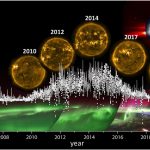This page will portray space engineering software and aerospace software that is used for space mission design and space planning and space budget analysis and spacecraft trajectory design. At aerospacelectures.com we will try to find all the useful space technology software and space mission software to help you plan your mission or project. This is especially useful for students to use spacecraft mission software to learn about space missions.
NASA GMAT Software (General Space Mission Analysis Tool) is an open-source tool for space mission design and navigation. GMAT is developed by a team of NASA, private industry, and public and private contributors.
https://sourceforge.net/projects/gmat/
Trajectory Browser is a web based software hosted at NASA Ames Research Center. It has an enabled search engine, a visualizer, and mission summaries for designing trajectories to planets and small-bodies, asteroids and Near Earth Objects (NEOs).
https://trajbrowser.arc.nasa.gov/traj_browser.php
Debris Assessment Software (DAS) performs orbital debris assessments, as described in NASA’s “Guidelines and Assessment Procedures for Limiting Orbital Debris”.
https://orbitaldebris.jsc.nasa.gov/mitigation/debris-assessment-software.html
Open MCT (Mission Control Technologies) is a next-generation mission control framework for visualization of data on desktop and mobile devices.
https://nasa.github.io/openmct/getting-started/
Space Project Cost Estimation Software is used to develop cost estimates/models for space systems, this technology combines an Excel add-in with a simple, robust, and transparent collection of NASA cost-estimating relationships (CERs), statistics, work breakdown structures, and cost-estimating algorithms.
https://software.nasa.gov/software/MFS-33187-2
SPICE (Spacecraft Planet Instrument Camera-Matrix Events) supports CubeSat and smallsat missions and offers the following capabilities: trajectory planning, mission engineering analyses, planning an instrument pointing profile, observation geometry visualization, and science data archiving and analysis.
https://naif.jpl.nasa.gov/naif/toolkit.html
Mission Simulation Toolkit (MST) is a simulation framework, supporting the development of autonomy technology for planetary exploration vehicles. The MST provides a software test bed which includes simulated robotic platforms, sensors, and environments.
https://ti.arc.nasa.gov/opensource/projects/mission-simulation-toolkit/
You can also contact us to get help on old FORTRAN codes used in space mission analysis and space computations. We can also help provide old FORTRAN codes for space related computations.





























